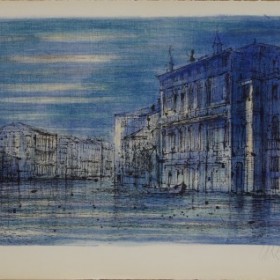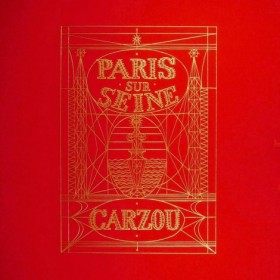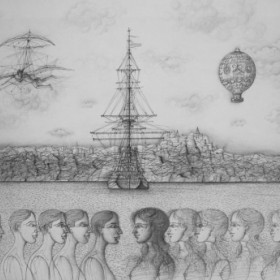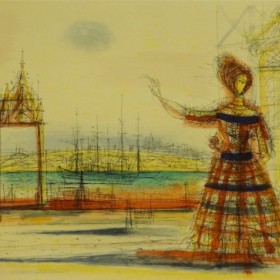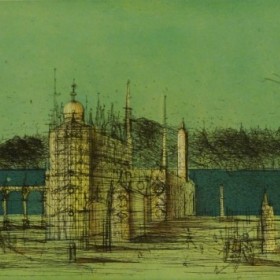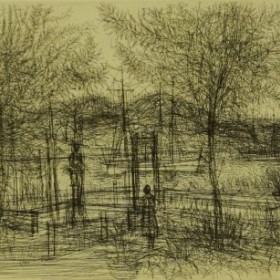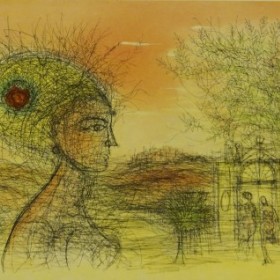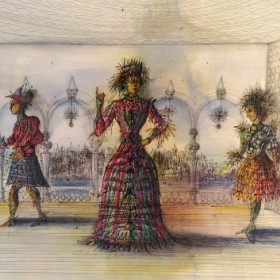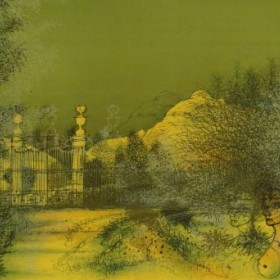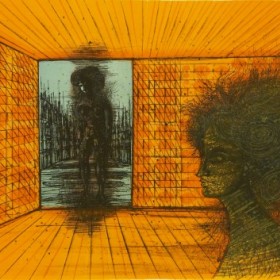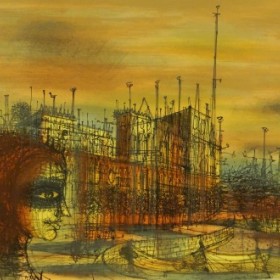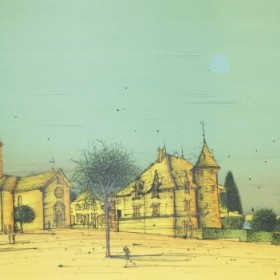
Jean Carzou
Jean Carzou (1907 - 2000)
Internationally renowned artist Jean Carzou, whose works graced the novels of literary giants like Ernest Hemmingway, adorned Paris opera houses and captured the passion of saints on chapel walls, died August 12, 2000 in Perigeaux, France. Carzou was a member of France's Academie des Beaux-arts and decorated with the National Order of Merit.
Born Karnik Zouloumian on January 1st, 1907 in Syria to an Armenian family, Carzou later created his name from the first syllables of his name and surname. Becoming a world traveler at an early age, Carzou was educated in Cairo Egypt before moving to Paris in 1924 at the age of 17 to study art and architecture in earnest.
Despite changing his name to the more Parisian moniker "Jean Carzou", the artist remained close ties to his Armenian heritage, and was ever mindful of his people's all-to-frequent political struggles and sufferings. Politics ultimately became one of the young artist's first means of support, when he abandoned the pursuit of architecture for the fine arts, and resorted to working as a street artist, doing caricatures and portraits to support himself and his studies. The caricatures became popular, and Carzou soon found his sketches of politicians and public figures published in Paris newspapers.
Carzou mastered a number of mediums, though his line drawings and engravings would become well known as illustrations for some of the 20th century's most revered writers, including Hemingway, Albert Camus, Ionesco and Rimbaud. Carzou produced stunning work of painted glass and porcelain, in pencils, gauche and pastels as well as oils, often choosing to work on textured or irregular fabrics and papers rather than traditional canvas. One of the artist's master works, completed in his 80s, was the Apocalypse of Saint Joan in the Chapel at Manosque in Vaucluse, France, which depicted not merely the passion of the saint and national hero, but the ravages of war.
Carzou, like his contemporaries Hemingway, Dali, and Picasso (though in an interview the artist criticized Picasso for being "vulgar") was part of a generation that witnessed many wars. Haunted to the point of obsession by the horrors he had witnessed, Carzou's work went through a period where the artist seemed to be desperate to remind the world of the holocausts past, perhaps in warning. His work on the Chapel de Manosque, one of the oldest churches in France, became his own fitting tribute when it was dedicated as the Museum de Jean Carzou in 1995.
Carzou's diverse talents were employed often by some of the most celebrated stages in Paris, and throughout the 1950s his set and costume designs appeared at the Comedie Francais as well as Paris Opera. Carzou also enjoyed sharing his art as an educator with the Paris Institute of Fine Arts, and he saw the establishment of the Carzou Foundation in 1991, at the age of 84.
Over the course of his long career, which began with his first formal exhibition in 1939, Carzou received many honors throughout the world, including 3 Hallmark Prizes for painting, Japan's Education Prize, Brussells' Grand Prize of Europe, and the Grand Prize of the Ile de France. In 1976 Carzou became the first living artist to have his work appear on a French postage stamp.
Jean Carzou, who remained active in his work and the management of his collections which now have permanent homes in America, Great Britain, Egypt, Japan and his adopted homeland, France, died of conditions attributed to old age in Perigeaux on August 12, 2000.Jean Carzou was preceded in death by his wife, Nané Carzou in 1978, and is survived by their only child, writer Jean-Marie Carzou.
Jean Carzou's portfolio
- 1 of 3
- ››
